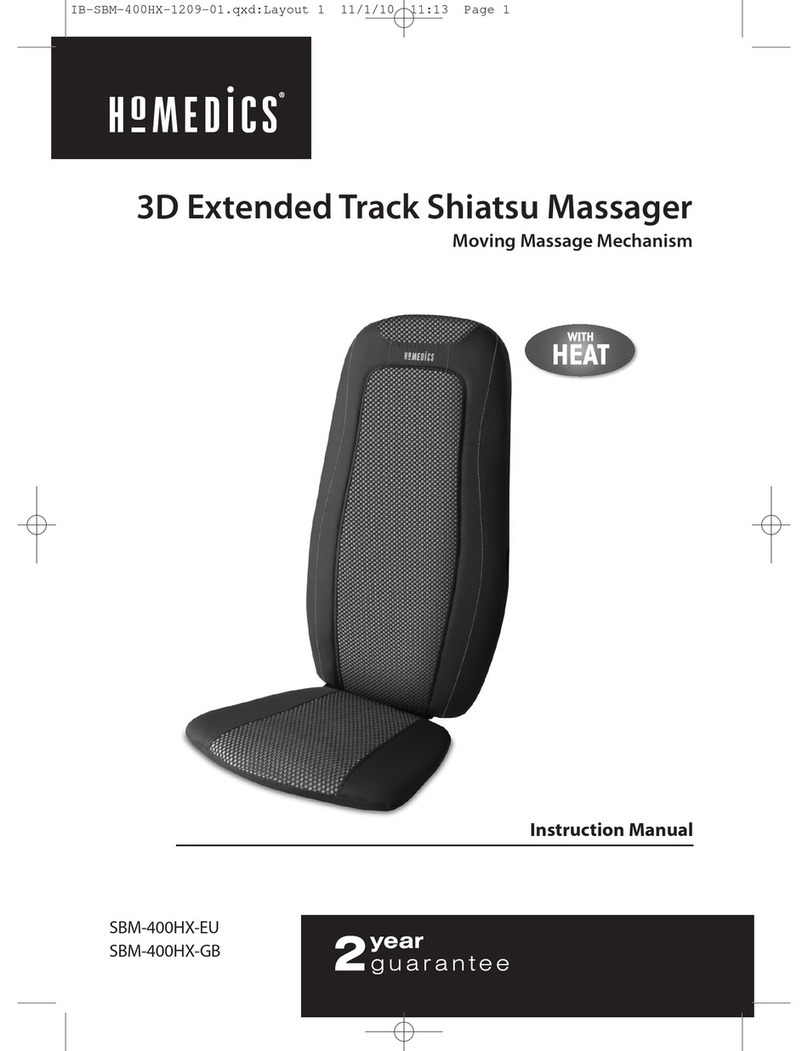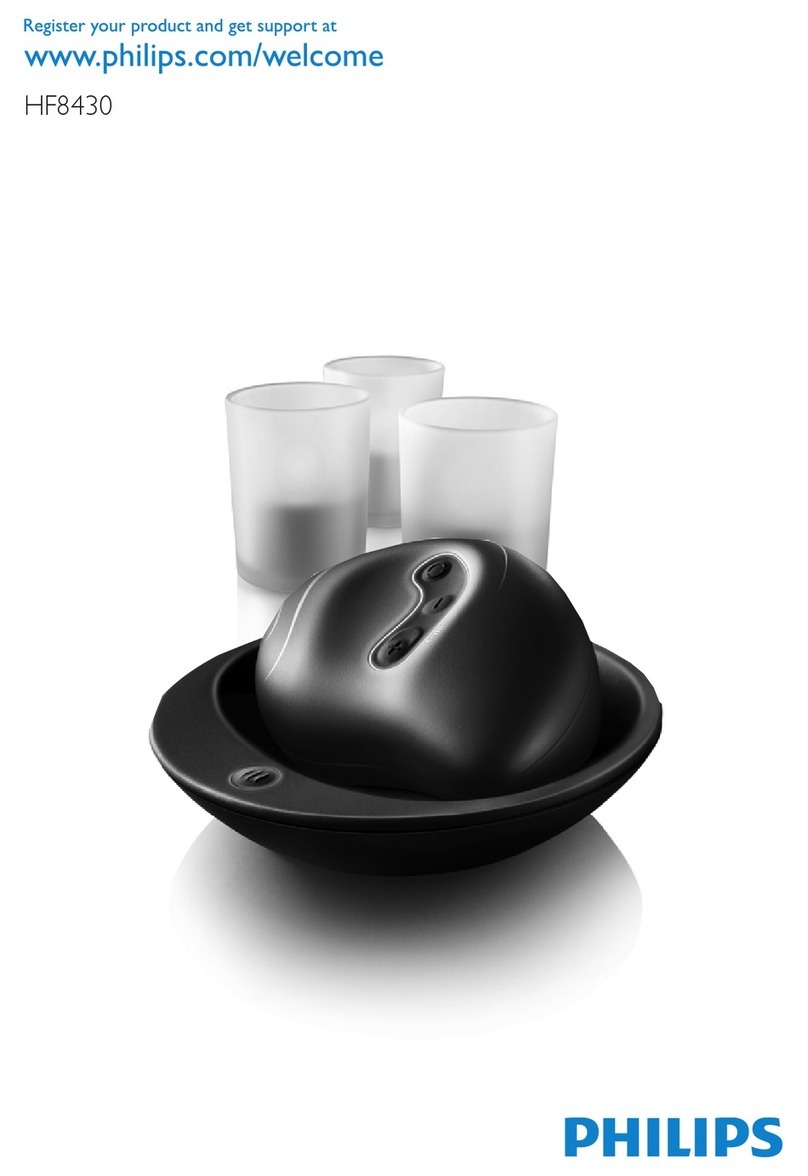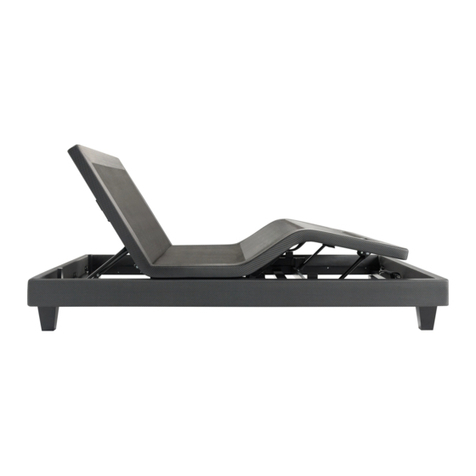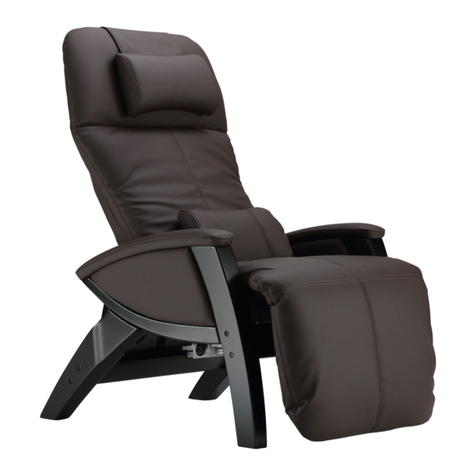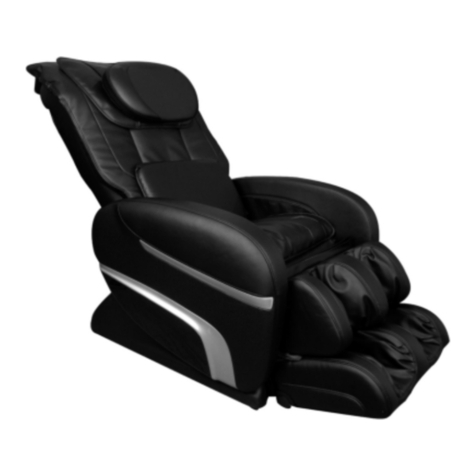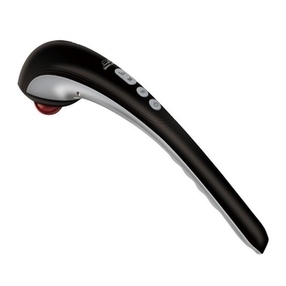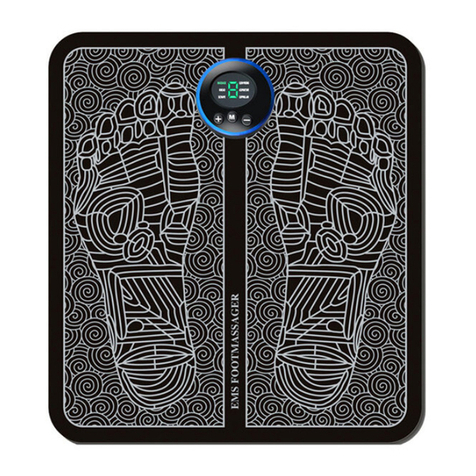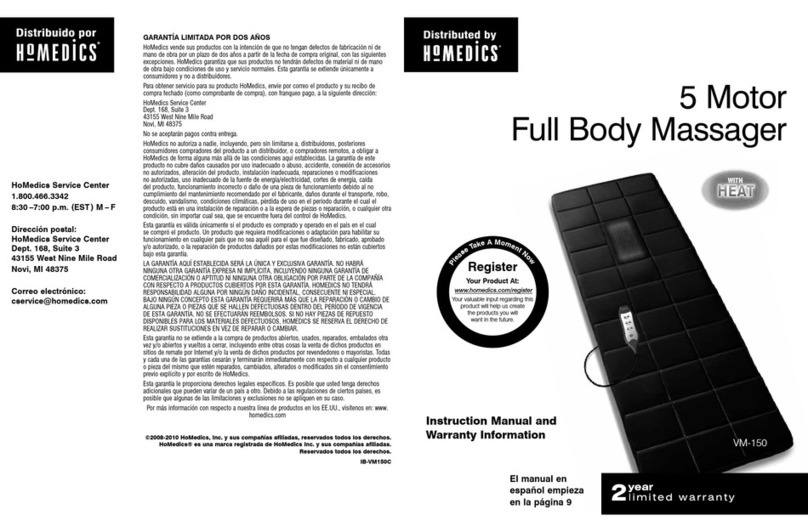Seating Matters DENVER User manual

Instruction Manual
DenverTM

1
Terminologies
Patient
The person sitting in the chair.
User
Competent person with responsibility for the persons sitting in the chair as well as the
suitability of the equipment for the Patient. The User is responsible for checking the chair
for faults during the course of its use.
All instructions must be read and understood
before the product may be used.
Contents
2Technical Specication
4Operating Instructions
4Braking Castors (20" / 500mm Seat Height Only)
5Back Angle Recline
6Leg Elevation & Seat Tilt
7Rise Function
8Seat Depth Adjustment
10 Powering Your Chair
11 Cleaning Instructions
12 Safety Instructions
13 Maintenance & Servicing
14 Recycling Policy
15 Warranty
16 Intellectual Property
This Instruction Manual is frequently updated to ensure safe use of your product.
Visit seatingmatters.com where you can nd a free copy of the most up to date version.

32
DenverTM
Technical
Specication Motor Functions
Back Recline, Tilt in Space,
Leg Rest Elevation & Rise Function
Basic Dimensions
AOverall height
BBack height
43-60" / 1090-1510mm
28" / 710mm
Seat Height
C16" / 400mm (3" Seat Cushion*)
18" / 450mm (5" Seat Cushion)
20" / 500mm (75mm Castors)
Seat Width
D (Seat Widths)
450mm / 18"
500mm / 20"
E (Overall Widths)
28" / 700mm
30" / 750mm
Seat Depth
(Achieved by Adjusting Back Position)
FPosition A
GPosition B
18" / 450mm
22" / 550mm
Rise Angle
H Rise Angle
Tilt in Space Angle
35°
20°
Overall Length
I 23" / 800mm
J 62" / 1600mm
Chair weight unloaded is
10.6 Stone / 57 Kg / 125.6 lb.
Max user weight limit is
21.5 Stone / 136.5 Kg / 301 lb.
*Please note when adapting cushion thickness arm
height will be aected.
Contact technical@seatingmatters.com for further
information.
A
B
C
D
E
I
J
F
G
H

54
To recline the back of the chair (g.2).
Use the buttons on the handheld remote
to move the back of the chair slowly until it
is in the required position. Exercise care in
case of injury to the patient or damage to
the surrounding environment.
To lock the chair in position.
75mm castors are used for ease of
transport of the chair and are not designed
for moving the chair while someone is
seated.
To engage the braking castor simply press
the pedal with your foot until it clicks in
place. (g.1a).
Braking castors, where provided, must be
in the braked position while in use. (g.1b).
Operating
Instructions
Braking Castors (20" / 500mm Seat Height Only) Back Angle Recline
(g.2)(g.1)
(g.1a) (g.1b)
(g.2a) (g.2b)
i ii
i. To reclined position (g.2a).
ii. To sitting position (g.2b).
20" / 500mm

76
To elevate the seat to a standing position
(g.4).
The seat will rise which will assist the
patient to a standing position. The patient
should be encouraged to use the armrests
during this elevation for stability and
balance.
Rise Function
(g.4)
To adjust the angle of the leg rest & seat
tilt (g.3).
Leg Elevation & Seat Tilt
(g.3)
(g.3a) (g.3b)
i. To seated position (g.4a).
ii. To standing position (g.4b).
i. Leg rest to elevated position &
backward seat tilt (g.3a).
ii. Leg rest to sitting position &
forward seat tilt (g.3b).
(g.4a) (g.4b)
iii
iii

98
To adjust the seat depth of the chair between position A and position B (g.5).
Seat Depth Adjustment
(g.5a)
To adjust the seat depth, stand at the back
of the chair and lift the lock levers at the
base of the backrest, situated at both sides.
(g.5b)
Lift the back up and out of its hinges.
(g.5d)
Close the levers at the base of the backrest
to lock the backrest in the new position.
(g.5c)
Place the back into the desired position.
18" / 450mm
22" / 550mm
Position A
Position B
(g.5)

1110
Powering Your Chair
The chair must be plugged into the mains at all times.
Your Seating Matters chair is upholstered with dartex multi-stretch material. See
image above for how to identify this on your chair.
Dartex Multi Stretch Fabric
Properties
Dartex is waterproof, has the ability to be wiped clean and has biostatic (anti-mycotic)
coatings to provide an impenetrable barrier to virus and bacteria.
Cleaning
Supercial dirt may be removed by wiping with a soft cloth moistened with water containing a
neutral detergent. More persistent contamination may be treated by wiping with alcohols or
turpentine substitute, followed by hot water and detergent.
Routine cleaning and disinfection may be carried out on the coating with hand hot water and
a neutral detergent or with a bleach solution (0.1% or 1000 parts per million available chlorine).
The material is compatible with the 10,000ppm available chlorine in solution required for the
decontamination of blood spills. Excess solution must be removed and the surface thoroughly
rinsed and dried prior to reuse or storage.
Proprietary disinfectants may be used provided manufacturer’s instructions are followed.
All cleaning agents, and disinfectants, must be thoroughly rinsed o and
the item dried after cleaning.
Cleaning & Maintenance of Upholstery
What you can use:
1. Warm Soapy
Water
Use warm soapy water
to wash down your
chair. Bear in mind that
it is important to dry the
surface afterwards.
2. 70% Alcohol This can be used in line
with the manufacturer's
guidelines.
3. Bleach Concentrations of
bleach from 1,000ppm
to 10,000ppm available
chlorine, is likely to be
considered eective
cleaning.
Use bleach sparingly.
The ppm of available chlorine may vary
with each dierent brand of bleach.
Search online for its data sheet and
adjust your ratio accordingly to achieve a
dilution of approx. 1000ppm of available
chlorine.
For and in-depth guide to
cleaning, please consult
our Clinicians Guide to
Infection Control, available
on our website.
Example of Dilution Ratio
Water Bleach
Cleaning
Instructions
(g.10a)
In case of a power outage, there are two 9V batteries located in the control box for
emergency backup power only. They are not meant to be used for a prolonged period and
the chair will operate slower when powered solely by internal batteries.
Vinyl
Dartex

1312
Assembly, Installation, Warnings & Hazards
as set by their health professional with
regard to the use of tilt and recline for
appropriate pressure management.
The product must be used on a level, plain,
hard surface with the brakes engaged to
avoid it moving during use and to ensure
stability. When the chair is not in transit, all
the braking castors on the product must
be engaged to prevent risk of injury when
being used.
The product may not be left in an outdoor
environment. More information on fabrics
and their environment can be found later
in this manual.
Ensure there is more than one competent
person there when making adjustments
to ensure they are correct and safe for the
Patient.
If in doubt as to any the adjustments, feel
free to contact Seating Matters direct at
technical@seatingmatters.com.
Under no circumstances must the User or
Patient stand or sit on the footplate of the
chair.
The chair should not be transported in a
vehicle while the Patient is seated on the
chair.
This product should not be lifted at any
time unless by competent persons trained
in such manual handling.
When operating the leg rest and recline
features on the chair please ensure there is
a 450mm gap around the chair to prevent
the back or leg rest coming into contact
with a wall or any other object.
On powered options, please ensure that
your chair is charged daily.
Please call your Seating Matters provider if
you have any questions on these points.
A competent person, or User, trained
in the use of the chair, who is either a
suitably qualied medical professional,
or is working under their guidance and
instruction, should make adjustments
and set up the product according to the
Patient requirements and dimensions
before the Patient sits in the chair. Where
possible, adjustments should be made
when the Patient is not in the chair to
avoid injury to the User and Patient.
This product, and its accessories, should
be used in accordance with local or
regional guidelines regarding the use of
such medical devices.
This chair should be fully assembled, all
xings secured and the chair checked for
safety by a competent person before use.
The User must ensure that the product is
in good condition before use (check all
nuts and bolts are fastened, fabric in good
condition etc). If there are any problems,
these must be reported to your Seating
Matters provider and corrected before the
chair is put into use.
Keep all body parts away from the
mechanisms under the chair. Repairs and
maintenance should only be carried out by
fully trained technicians.
Exercise care in using the release lever for
the reclining mechanisms and adjustments
to avoid injury.
Pressure ulcer or pressure injury reduction
is not a guarantee with this equipment.
The User must ensure that the Patient has
a period out of the chair after prolonged
sitting to raise tissue oxygenation levels.
Although the chair oers pressure
management, the body tissue still needs
time to recover. In many places, local
or national guidelines recommend a
maximum of 2 hours sitting at any one
time. You must also observe Patient
specic recommendations and guidelines
15
16
14
11
12
13
10
9
8
7
6
5
4
3
2
1
Safety
Instructions
Maintenance
& Servicing
Regularly servicing your Seating Matters chair will prevent untimely and
inconvenient breakdowns, reduce repair costs and extend the chair's life. Damage
to the chair can also cause excess strain for the User and Patient.
Important
Parts can only be changed by service persons
trained in Seating Matters products and use
only Seating Matters parts. We recommend
that your chair is serviced every year by a
Seating Matters approved provider for any
running repairs and maintenance.
Maintenance
Carry out the following regular checks to
ensure the operation and safety of the chair.
If you are in any doubt about the functioning
of your chair contact your Seating Matters
approved provider immediately.
Daily
Check that the castors are not damaged.
Check that the castors turn freely.
Make sure that the castor forks run free and
are not bent.
Check all fabrics for damage or
contamination and replace where necessary.
See Cleaning Instructions section in manual
for cleaning instructions.
Check batteries and electrical connections
are secure.
Weekly
Check the castor ttings for hair and
dirt etc. which could restrict the castor
movement.
Pick out any such material with tweezers or
take the spindle out, clean it and then
replace it.
If it is still not free (one continuous turn
without it sticking) contact your Seating
Matters approved provider for replacement.
6
1
2
3
4
5
Monthly
Castors
Make sure the top of the castor housing is
parallel with the oor. Any variation will cause
restricted movement. If it is damaged contact
your Seating Matters approved provider for
replacement.
Mechanisms
Check all tilting mechanisms are
working smoothly.
Check that cables are not kinked or frayed.
Check that all nuts and bolts are present.
Check that all nuts and bolts are secure.
Note: If nuts or bolts need attention, contact your
Seating Matters approved provider IMMEDIATELY and
DO NOT USE the chair until it has been serviced.
Leg Rest
Check that all leg rests are easily removed/
swung-away and replaced or repositioned
easily. Ensure that parts lock in place securely.
If parts are not locking try lubricating. If the
problem still remains contact your Seating
Matters approved provider.
Frame
Check the visible parts of the frame for cracks,
splits, large dents or other damage. If you nd
any of these things DO NOT USE. Contact
your Seating Matters approved provider
immediately.
1
2
3

1514
Seating Matters are committed to reducing waste and improving our care for the
environment. Where possible we have manufactured our chairs with recyclable
materials. Guidance on recycling can be found below.
6
7
8
1
2
3
4
5
The WEEE Directive
The WEEE Directive, 2012/19/EC, urges
producers of Electrical and Electronic
Equipment (EEE) to provide information on
how these products can be treated, reused or
recycled.
In order to comply with this directive in the
European Union, Seating Matters electrical
components are marked with a crossed out
wheelie bin. This indicates that the electrical
components should be treated in accordance
with the WEEE regulations after their
useful life.
Advice on Recycling
Your Seating Matters product
may contain batteries which
should not be disposed of in
household waste.
Never dispose of the battery in a re. This
may cause an explosion.
The product may contain substances that
could be harmful to the environment.
Electrical components must be taken to
a proper recycling facility.
Your Seating Matters product contains
component parts which can be recycled.
We thank you for being environmentally
responsible and for making eorts to
recycle your Seating Matters product at the
end of its’ safe and useful life.
Contact your local authority or
governmental agency for the regulations
that apply in your area.
If you wish to have Seating Matters recycle
your product and your behalf,
you are welcome to return the product to
our company.
Plastic Components
Many of our plastic components are
made from polypropylene and can be
recycled as long as they are recycled
with other polypropylene resin materials.
Polypropylene sheets can be recycled with
any other materials that have this symbol.
Plastic Trays
Our plastic tray tables are made from
Polyethylene Terephthalate Glycol
(PETG) which is a sturdy, transparent,
easily cleaned material. Like acrylic,
PETG is 100% recyclable and can be recycled
and repurposed indenitely. Capable of being
sterilized, it's a renowned food-safe material
and will help us meet a higher standard
towards infection prevention & control. PETG's
damage resistance is far higher than that of
acrylic & has an impact resistance 30 times
that of glass. PETG can be recycled with any
other materials that have this symbol.
Safety
The Denver™ is CE marked to show
conformance to the Medical Devices Directive
93/42/EEC and conforms to BS ISO 7176 at
medium hazard.
Regional Variations
The device referred to as a "Denver™" is a
Seating Matters product category and the
information included in this document reects
common features of this group of products.
In some regions of the world, we supply
product design variations of equivalent
function and ease-of-use but with alternative
specications or reinforcements.
Recycling
Policy
The following table outlines the parts covered under frame warranty and the
warranty period specic to your chair;
Warranty
For full terms and
conditions visit our
website or scan
the QR code here:
Chair Frame Warranty Period Frame Parts Covered
Adult Phoenix & Sorrento
7 Years
(a) metal base frame;
(b) metal seat frame;
(c) metal back rest frame;
(d) armrest brackets;
(e) cracks or tears in metal
work;
(f) leg rest linkages;
(g) all mounting points
for gas struts and electric
actuators;
(h) all metal xings and
hinges; and
(i) all welds on chair frame.
Kids Phoenix & Sorrento
Bariatric Sorrento
Atlanta
Monaco
Milano
3 Years
Sydney
Denver 1 Year
The following table outlines the parts covered under components warranty;
Chair Component Warranty Period Components Covered
Adult Phoenix & Sorrento
1 Year
(a) Actuator systems
including control box,
handset and charger/charger
lead.
(b) Gas struts including
release cables and
component parts.
(c) Upholstery if there
is a clear and obvious
manufacturing error.
(d) Castors
(e) Wing knobs and
adjustment handles.
(f) Bolts and attachment
xings.
Kids Phoenix & Sorrento
Bariatric Sorrento
Atlanta
Monaco
Milano
Sydney
Denver

16
We are here to help
For any questions or queries regarding
your Seating Matters chair please contact:
contact@seatingmatters.com
Seating Matters are at the forefront of seating research and design, therefore
we take the protection of our intellectual property very seriously and have our
designs, patents and trademarks protected in many jurisdictions throughout the
world.
The Seating Matters Trademark is
registered throughout the European
Union and various countries globally.
Patent Pending No. GB1915470.7
US Design Patent No. 601360S
No. D611718
No. 600932
No. D602704S
Australian Design
Registration
No. 325536
No. 324011
No. 325537
No. 324012
Community Design
Registration
No. 001016364-002
No. 000942180-0004
No. 002428813-0001
No. 001016364-001
No. 012673018
Canadian Design
Registration
No. 130224
No. 128763
No. 130217
No. 128764
Intellectual
Property

Australia
9/256 New Line Road
Dural
NSW 2158
Australia
T: +61 1300 001 050
australia@seatingmatters.com
N. Ireland & ROI
131 Carnamu Road
Limavady
Northern Ireland
BT49 9JG
T: +44 (0) 28 777 666 24
contact@seatingmatters.com
USA
300 International Dr
Suite 100, Bualo
New York, USA
NY 14221
T: +1 (905) 507 9007
usa@seatingmatters.com
UK & Europe
1st Floor
239 High Street, Kensington
London, UK
W8 6SN
T: +44 (0) 20 3982 2900
london@seatingmatters.com
Other manuals for DENVER
2
Table of contents
Other Seating Matters Massager manuals


